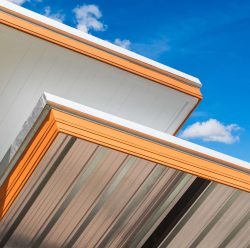3 Essential Warranty Tips When Replacing Siding, Soffit & Fascia in London, Ontario
October 14, 2025 2:00 pmReplacing siding, soffit, and fascia is a major investment. The right warranty can protect that investment for decades—if you understand the terms and keep coverage valid. This guide explains what London, Ontario homeowners should demand before signing a contract, with practical checks you can use on any quote.
Who this helps: Owners comparing proposals, worried about fine print, and unsure which warranty actually protects them.
Tip 1 — Know Your Warranties and the Fine Print
Manufacturer vs. workmanship coverage
Your exterior system is protected by two different warranties:Manufacturer (materials) warranty: Covers the siding, soffit, and fascia products against manufacturing defects. Depending on brand and material, coverage can range from multi-decade to “limited lifetime,” often with specific terms for colour fade, impact resistance, and transferability.
Workmanship (labour) warranty: Issued by the installer and covers the quality of installation—how the products were fastened, flashed, vented, and sealed. This protects you from costs caused by installation errors that materials warranties typically do not cover.
These two layers are complementary. You want both in writing.
Transferability, exclusions, and proof of purchase
Ask whether the warranty transfers to a new owner if you sell.
Transferable coverage can improve resale value because buyers inherit protection; some manufacturers explicitly highlight transfer benefits. Confirm any transfer limits (e.g., one-time transfer within a set period) and whether you must register after installation.
Read exclusions carefully. Many vinyl warranties exclude discolouration from pollutants or mildew, chemical exposure, or incompatible accessories. Hail and high-impact language varies by brand. Keep invoices, product lists, and serial/lot numbers—claims usually require proof of purchase and approved components.
Colour stability is common but not universal. Some vinyl warranties define “excessive fade” precisely (e.g., measured in Hunter units per ASTM colour standards) and cap fade coverage at a set number of years. Other materials (e.g., composites) may include hail coverage. Confirm how fade is measured, the time limit, and whether hail/impact is included or falls to your home insurance.

Tip 2 — Installation Details That Keep Warranties Valid
Most manufacturer warranties require installation per code and the product manual. That’s where soffit and fascia matter—proper air intake and a balanced ventilation system protect the roof deck, manage moisture, and help siding perform as designed.
Soffit intake, attic airflow, and code ratios
London’s four-season climate and freeze-thaw cycles make ventilation essential. Ontario’s building code requires a minimum unobstructed vent area equal to 1/300 of the insulated ceiling area (or 1/150 for low-slope or joist roofs), distributed between intake (soffit/eave) and exhaust (ridge/roof) vents. Balanced intake and exhaust help control moisture and heat under the roof, reducing risk of rot or ice-related problems—and keeping your warranty safe from “improper ventilation” exclusions.
Quick check you can ask for:
“How many square feet is my attic?”“Show me how you calculated the intake (soffit vent) area and exhaust (ridge/roof) area to meet 1/300 or 1/150.”
“Will baffles be added to keep insulation from blocking soffit vents?”
Using approved accessories and fasteners
Manufacturers often limit coverage if incompatible trims, fasteners, or solvents are used. Your quote should list brand-approved accessories, including starter strips, J-channels, and perforated soffit panels. Ask to see the cut sheets and installation pages the crew will follow. This aligns your install with warranty conditions and avoids accessory-related exclusions.
Documented photos, permits, and registration
Protect yourself with before/during/after photos of substrate prep, flashing, venting, and fastening patterns. Request copies of permits (where applicable) and ask your contractor to register the manufacturer warranty on your behalf, then send you confirmation. If you ever need a claim, these documents save time and prevent finger-pointing.
Tip 3 — Compare Contractors by Warranty Support, Not Just Price
A lower quote with vague coverage can cost more later. Compare installers on how they handle warranties, not just the line-item price.
Local service, response time, and claim process
Ask who you call if something goes wrong in five years. A reliable contractor documents installation details, registers your warranty, and has a clear process for warranty inspections and claims. Transferable warranties can also boost resale value; ask how the company supports sellers and buyers with paperwork.
Coordinating replacing soffit and fascia with siding
Doing soffit/fascia at the same time as siding reduces seams and rework and lets the crew balance intake and exhaust properly. Because soffit and fascia influence ventilation, coordinating them with siding helps maintain warranty compliance and long-term performance. For a homeowner’s overview of soffit and fascia choices, see this plain-language guide from Angi.
(Helpful read: Angi — Soffit & Fascia Options).
What to see on the quote and contract
Manufacturer & series for siding, soffit, fascia + colour codes
Accessory list (channels, trims, vents, fasteners)
Ventilation calculation (intake/exhaust area) meeting code ratios
Workmanship warranty length and scope (what’s covered, response times)
Registration steps and who files them
Photo documentation promise
When it comes to siding in London, Ontario, your warranty is just as important as your material choice. Ask detailed questions, insist on written terms, and work with an experienced contractor like McCallum Aluminum Ltd. who can explain and register every warranty for you.
A clear, properly managed warranty not only protects your home—it protects your peace of mind.

